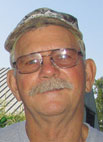
Bryan Nelson believes operating a farm takes a lot of heart and he exudes plenty of passion when it comes to caring for his flock of sheep. But this shepherd also utilizes his off-the-farm knowledge to guide his farming decisions. “I am a ceramic engineer from the University of Missouri-Rolla. I have spent a lot of my career in research and science. So the genetics fascinate me,” Bryan explained. Bryan, his wife Debra, along with daughters, Sarah and Abbie, raise Fullblood, Purebred and Percentage Dorper sheep on their 27-acre farm in Bolivar, Mo. In 2005, the family moved to Bolivar from Portland, Ore., to fulfill Bryan’s childhood dream of returning to the Show-Me state and owning a farm.
The Nelsons originally started their venture into animal husbandry with cattle but soon made the switch to sheep. “I wanted to get sheep because in doing my research I wanted to maximize what I could produce on 27 acres,” said Bryan. The Nelsons determined sheep would give them the best return on their investment. “Then to maximize on that I become a seedstock producer,” explained Bryan. They started Bear Creek Ranch with seven Katahdin ewe lambs and a 75-percent Dorper/25-percent Katahdin ram. Now the Nelson’s own 40 mature and replacement ewes and 20 rams to sell. They sell a majority of their rams as breeding stock and the rest go to market. The Nelsons hold on to most of their ewes in an effort to build their flock. All their sheep are registered.
Bryan’s research and science background plays a significant role in his farming style. He recently purchased kits to conduct genetic testing on his flock. He is particularly interested in breeding into his flock a genetic predisposition against scrapie, a fatal degenerative disease. “They have found the genetic marker for scrapie,” said Bryan. He plans to test his rams to see if they have the proper Q and R genetic markers that protect them from scrapie. Bryan said once he knows the genetic makeup of his flock he can breed in the scrapie resistance. “I will cull out the ones who do not have the right genetic combinations,” said Bryan.
The Nelsons have identified four characteristics essential for their flock: shedding ability, fertility, growth and scrapie resistance. Bryan charts his lambs’ three-month, nine-month and yearly weights in order to calculate their ADG (average daily gain). He also closely monitors his ewes and rams to determine which ones display the best shedding ability. “It takes a lot of breeding and focus on genetics to get the shedability,” said Bryan. In addition, he tracks which ewes consistently produce twins.
Through the years, Bryan has strategically bred his ewes, in an effort to build a flock that exhibits the genetic combinations he finds favorable to his style of farming. He has also raised rams that have the genetic makeup he wants for his flock. “I am a closed system. I don’t buy rams anymore. I use my own,” said Bryan. But getting to this point has taken a lot of work and trial and error. When is comes to breeding strategies, Bryan said he is “serious, intentional and systematic”.
The Nelsons follow a low-input farming philosophy. However, they have found sometimes it is best to deviate from their own strategy. Following the deaths of three lambs, the Nelson’s took one of the lambs to their veterinarian for an autopsy. The autopsy determined the lamb didn’t have enough body fat to thrive. Now the Nelsons supplement the lambs’ nutrient intake with a 12-percent protein feed and fescue hay, especially during the winter months. Bryan found this helps his lambs thrive and the additional nutrients also help them to be more parasite resistant.
The Nelsons have endured their share of bumps along the way and they want to share what they have learned with other shepherds. Bryan’s first bit of advice for new shepherds, “You have to be careful on when you put your ram in with your ewes.” Bryan suggested waiting until mid-to-late November before turning in your ram. Any earlier, Bryan said, “If there is a long, cold winter then you may literally have a lamb freeze to the ground.” It happened to him. “The other thing I would advise is for people to wait a full year before breeding the lambs,” said Bryan. The Nelsons discovered letting the lambs get a solid year of growth paid off in terms of healthier, stronger ewes.
Bryan said he is grateful to the shepherds who guided his family when they first fumbled their way through building a flock. Now the Nelsons want to pay it forward. They say they are always available to help new shepherds. “I just like seeing people be happy and getting in to it,” concluded Bryan.







